How to Fillet a Flat Fish
Filleting a flat fish is easy if you follow these step-by-step instructions.
Most people leave this task to the fishmonger but knowing how to fillet a flat fish (and other fishes) will save you money as you’ll be able to use the carcass to make soups, and stock. There are a variety of ways to fillet a fish, and here is a technique which is easiest for beginners.
The purpose is to get 4 beautiful filets from the fish, leaving as little fish meat on the carcass as possible.
Read also : Sole fillet rolls with broccoli
Types of flat fish
Many flat fish have both eyes on one side of their head. Some varieties of flat fish include: flounder, brill, dab, megrim, plaice, sole, turbot and monkfish. Read more
Prepare the equipment
- 1 big cutting board
- 1 fillet knife or another knife with a flexible blade
- 1 fish scaler
- 1 plate or tray for the fillets
- 1 bowl for the carcass
Prepare a big enough cutting board that holds one whole fish. Your knife should be sharp and have a long, flexible blade that will not damage the fish and will cut the fillets as neatly as possible. The tray and bowl can be replaced by a large plate and is needed to keep the fillets separate from the fish bones.
Step by step instructions
Step 1
- Descale and wash the fish before drying it with kitchen paper. Make an inscission at the tail and strip the skin before filleting.
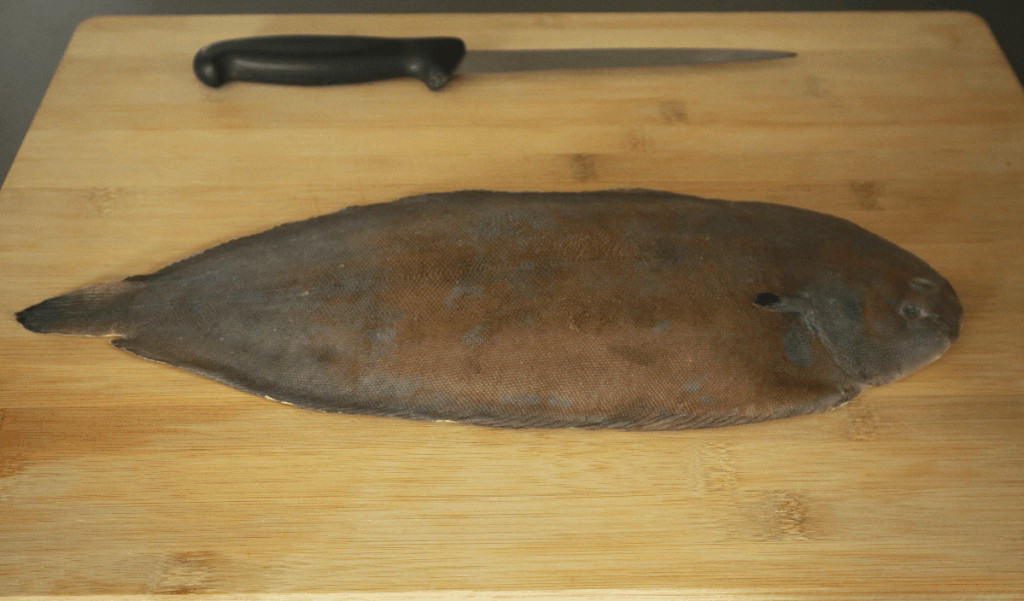
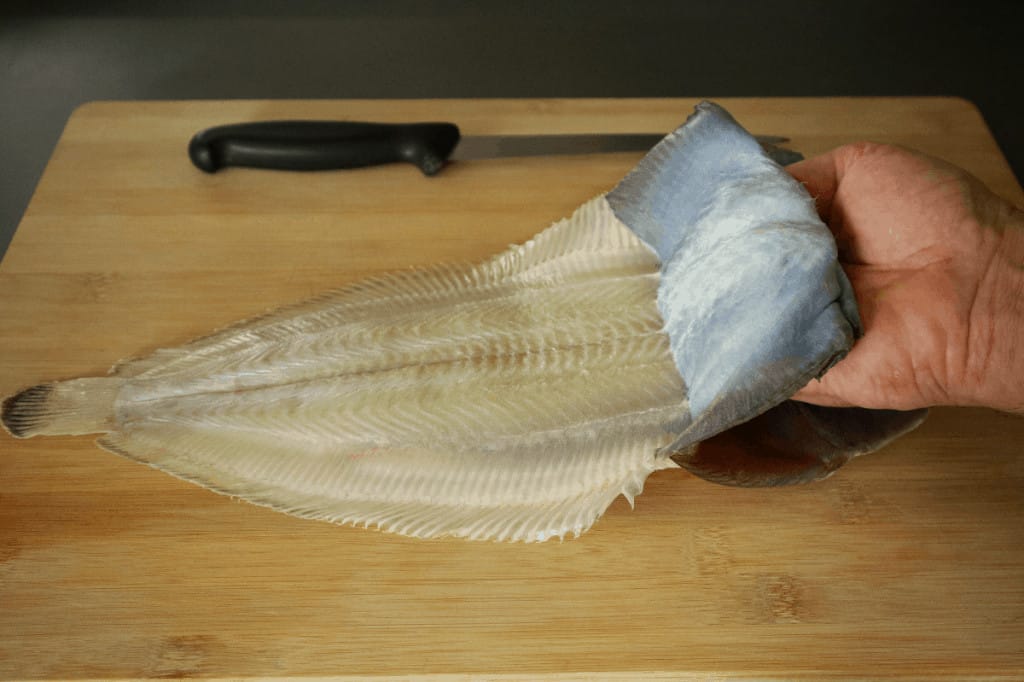

Step 2
- Lay the fish with the dark skinned side on top. (also if the skin has been stripped)
- Use kitchen scissors to cut the tail.
- Use the same sturdy scissors to cut the fins with tiny fish bones.
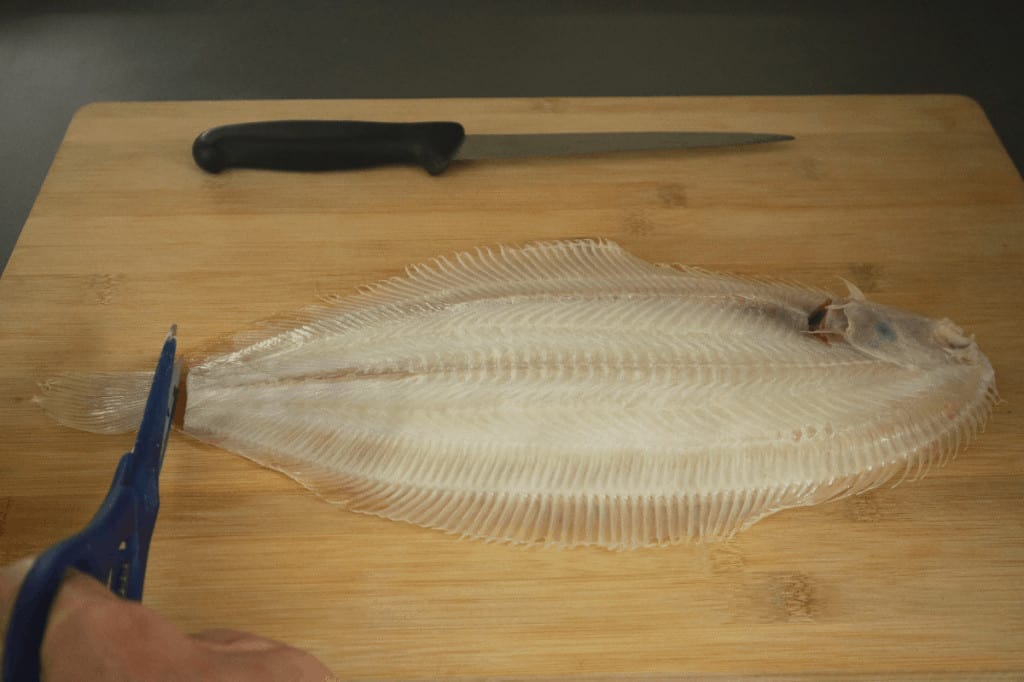
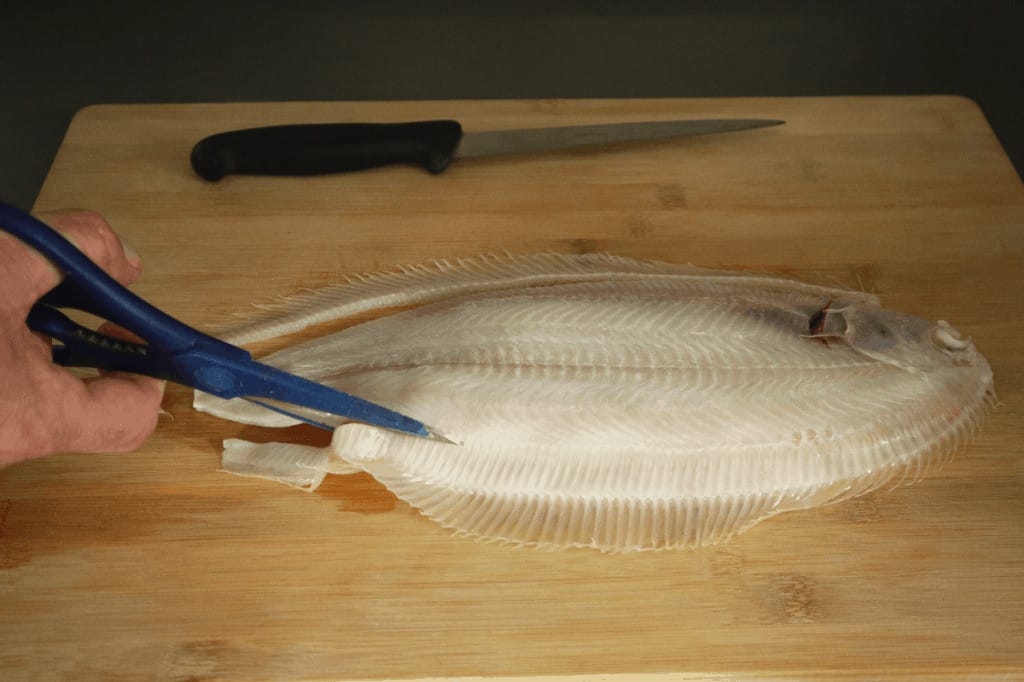
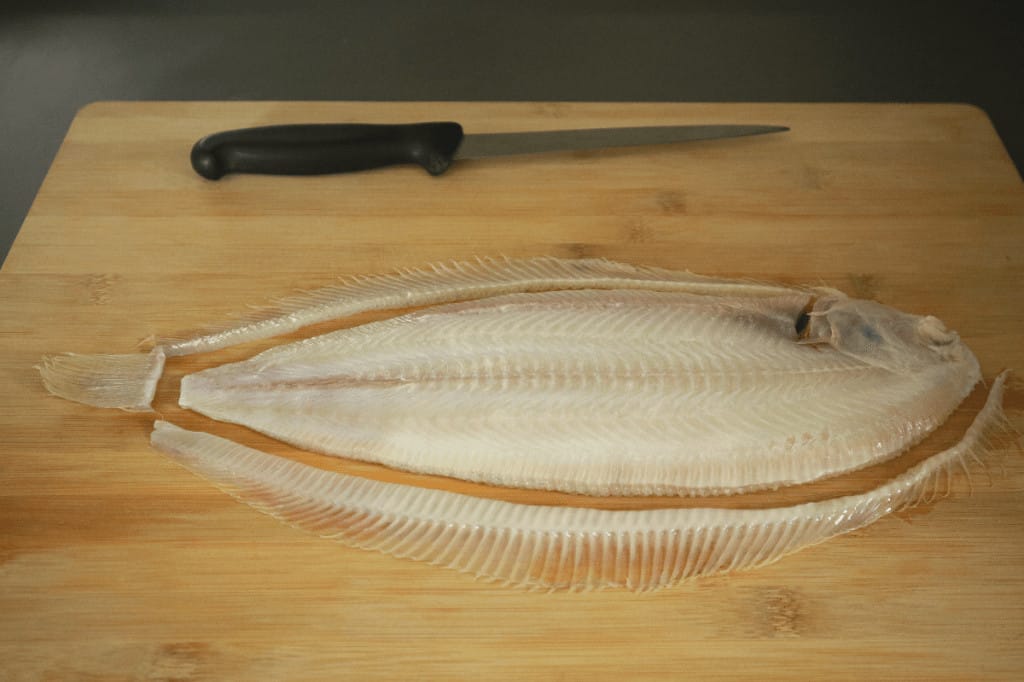
Step 3
- Cut along the ‘spine’, which is easy to see and feel, from the head to the tail.
- Slide your knife along the bone to carefully cut the fillet away. The fillet will easily lift up and enable you to cut it completely off the bone.
- Cut along the other side of the spine before removing the second fillet.
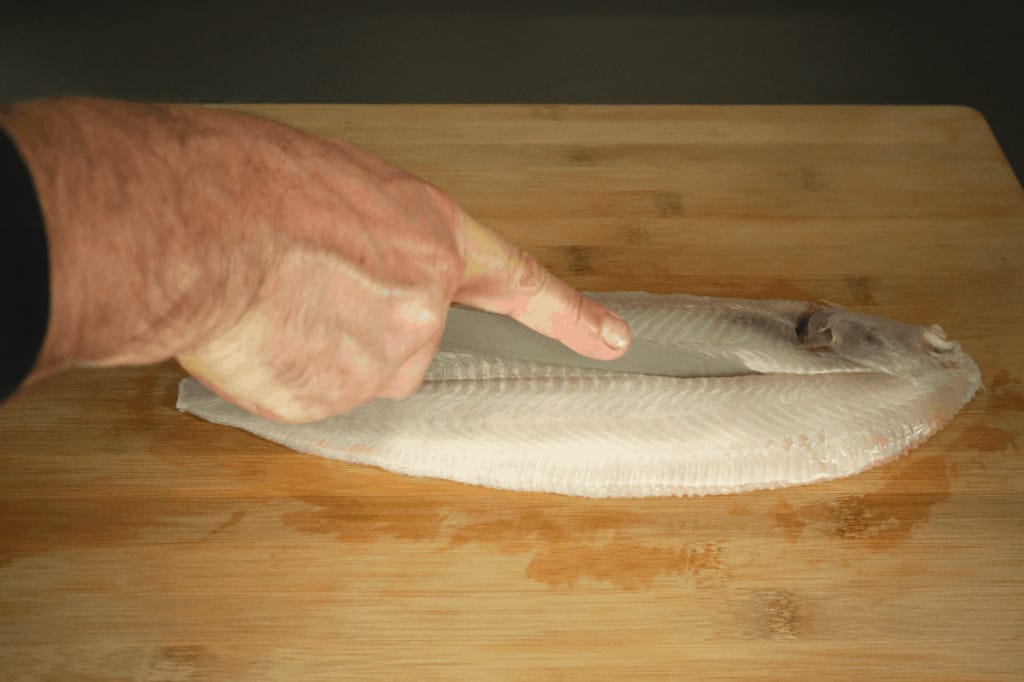

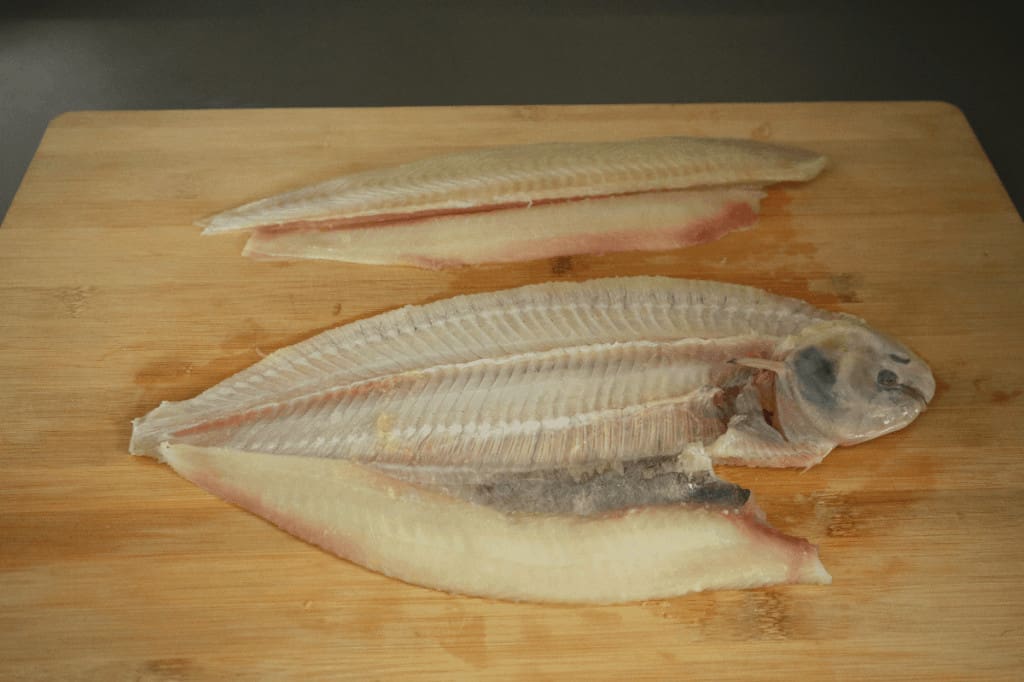
Step 4
- Flip the fish over and repeat the same process to remove the remaining filets.
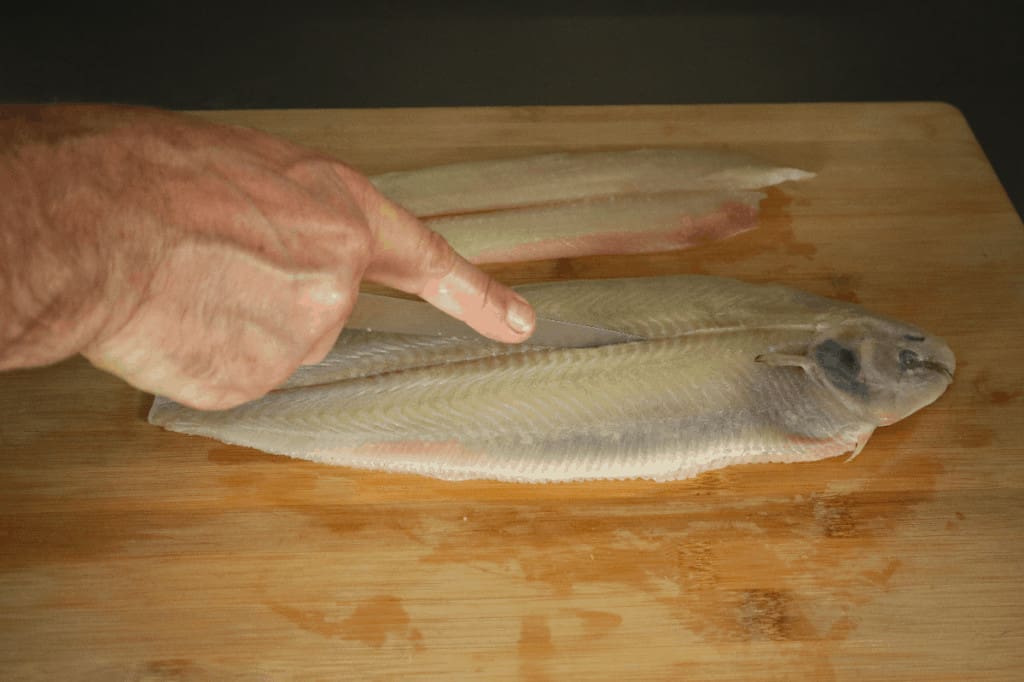
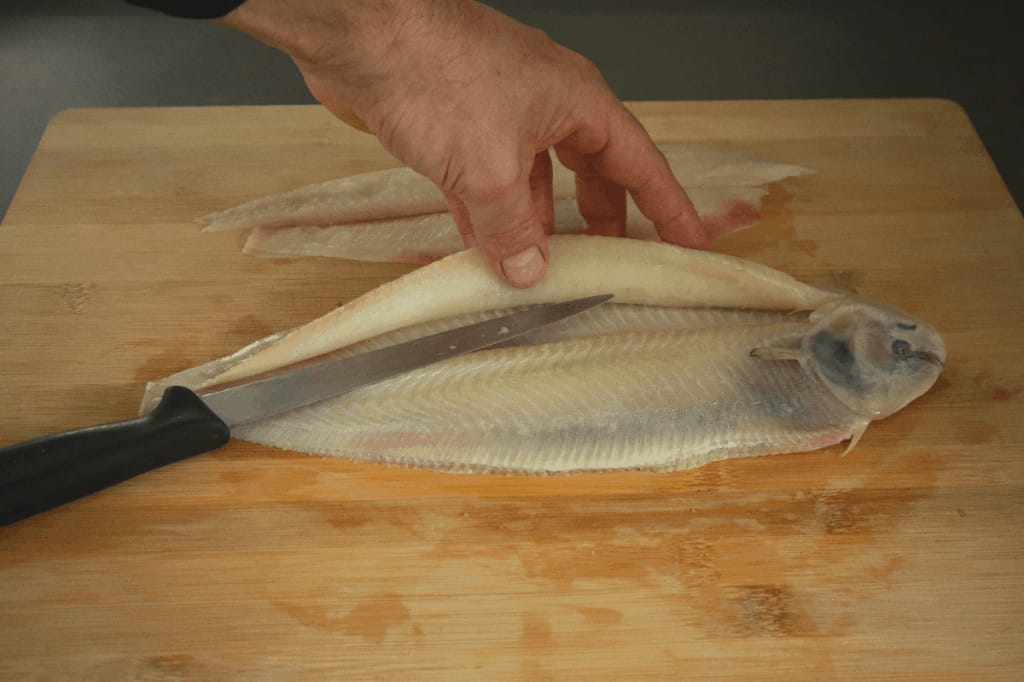
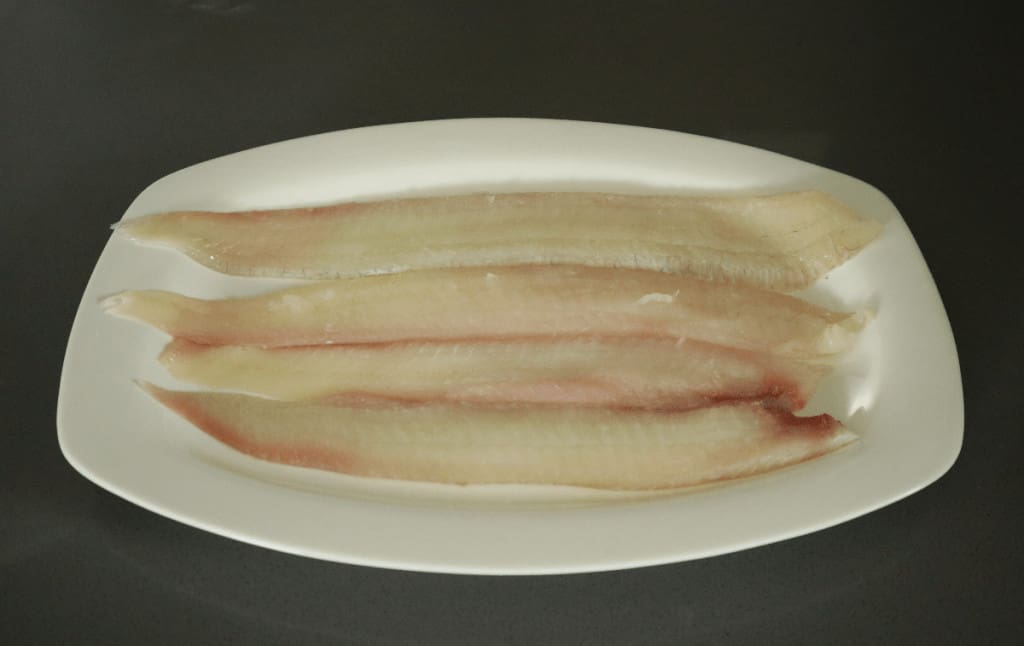
Step 5
- Once all fillets are removed, break the bones, rinse them and make a fish stock or freeze for later use. The skin can be discarted.